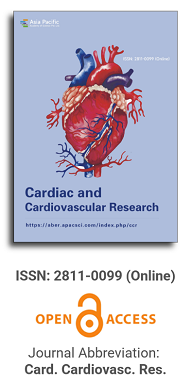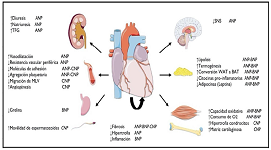
Asia Pacific Academy of Science Pte. Ltd. (APACSCI) specializes in international journal publishing. APACSCI adopts the open access publishing model and provides an important communication bridge for academic groups whose interest fields include engineering, technology, medicine, computer, mathematics, agriculture and forestry, and environment.

Issue release: 30 June 2025
Introduction: Contrast-enhanced ultrasound (CEUS) allows the visualization of atherosclerotic plaque neovessels, which are the hallmark of carotid plaque instability. Aim: The purpose of our prospective study was to check the correlation between carotid CEUS analysis and the recurrence of TIA/stroke in patients with a previous recent TIA/stroke and neurological impairment congruent with vascular stenosis. Materials and methods: From November 2021 to May 2023, 62 consecutive patients (mean age 73.8 ± 12.2, 51 female) with a TIA/stroke in the previous 30 days underwent carotid ultrasound and carotid CEUS in an outpatient setting after 10 days from the acute event. The inclusion criteria were one atherosclerotic plaque inside the internal carotid artery, congruent with symptoms, which was causing a stenosis of less than 50% (low-grade stenosis). The carotid plaque neovascularization scoring method was score 0: no visible microbubbles within the plaque (A); score 1: minimal microbubbles confined to periadventitial (B); and score 2: microbubbles present throughout the plaque core (C). During the 6-month, 12-month, and 18-month follow-ups, we checked TIA/stroke recurrences. A multivariable logistic regression analysis was performed. P < 0.05 was considered significant. Results: In our series, 22% of patients have a CEUS score of 0, 35% have a CEUS score of 1, and 43% have a CEUS score of 2. At six-month follow-up, we found 21% TIA/stroke recurrences in CEUS score 2, despite the ongoing best medical therapy as per guidelines. At 12-month follow-up, we did not find any recurrence of cerebrovascular events. In Cox regression analysis, CEUS-detected neovascularization was independently associated with TIA/stroke recurrence (hazard ratio, 5.37; 95% confidence interval, 1.36–2.31). Conclusions: Plaque neovascularization, detected by CEUS, is an independent predictor of TIA/stroke recurrence at six-month follow-up in patients with carotid atherosclerosis despite low-grade stenosis. This diagnostic method can guide the best surgical vs. medical choice in the treatment of low-grade carotid stenosis, which is determined by soft atherosclerotic plaque.

Prof. Prakash Deedwania
University of California,
San Francisco, United States





 Open Access
Open Access